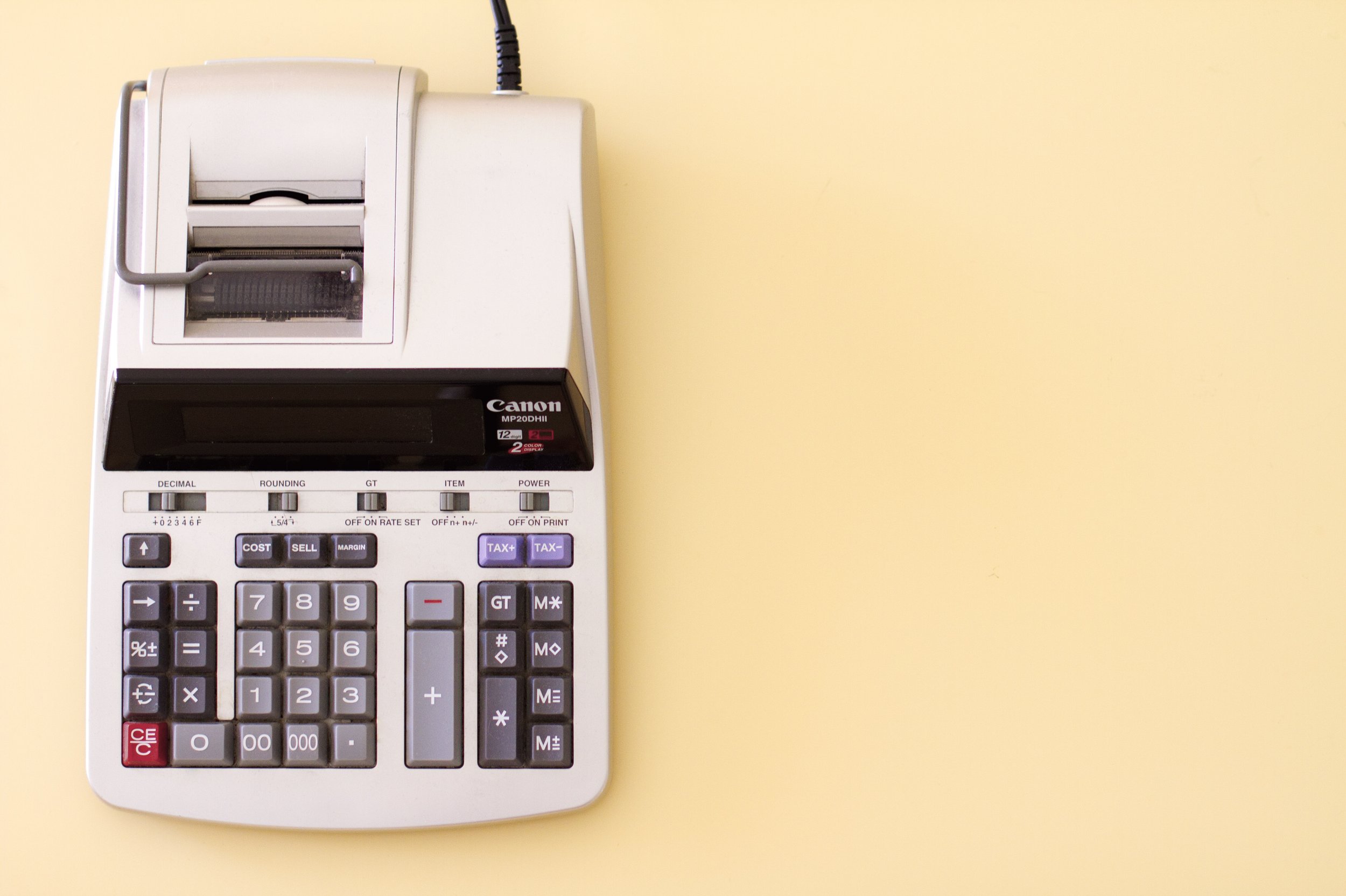Investing in Triple Net (NNN) Properties: EVERYTHING You Need to Know
Triple net properties are one of the most attractive real estate investments for a variety of reasons: they can offer low risk, minimal responsibilities for the landlord, and long-term passive income.
Today, we’re going to cover everything you need to know about triple net leases to decide whether or not they make sense to add to your investment portfolio.
First, What Is a NNN Lease?
Triple Net or Net Net Net (NNN) leases are a commercial real estate lease structure that pushes the responsibility of the additional rent expenses related to operating the property, such common area maintenance, property taxes, and building insurance, onto the tenant or lessee.
These additional expenses make up the three “nets” and are commonly paid to the landlord on a monthly basis alongside the base rent.
These types of leases are more commonly found in retail properties, but are becoming more and more common in office and industrial, as well. There are several different variations of net leases, each of which places a different level of responsibility for property expenses onto the tenant.
The Different Types of Net Leases
There are three primary types of net leases:
Single Net
Double Net
Triple Net
And Absolute Net
In a single net lease, the tenant is responsible for paying their base rent along with the property taxes.
In a double net lease, the tenant is responsible for paying their base rent along with the property taxes and building insurance.
In a triple net lease, the tenant is responsible for paying their base rent along with the property taxes, building insurance, and common area maintenance.
Absolute net leases push all responsibilities, including structural building maintenance, onto the tenant, leaving the landlord with no responsibility other than cashing those checks.
Why Are They Different?
There are many reasons that the lease on a property may be single, double, or triple net.
Triple net leases are far more attractive for landlords, since they will have minimal responsibilities and can pass all of the expenses on to the tenant.
That means that a tenant may negotiate out of a triple net lease down to a single or double net lease, though these types of net leases are more commonly found among unsophisticated landlords and tenants.
Triple Net Lease Pros and Cons
Triple net lease investments have a number of pros that can make them attractive for a wide variety of investors, but they can also have a fair amount of cons.
Here are the benefits of NNN investments:
Low-risk investment: since they are often leased by investment-grade tenants
Reliable income stream: since the tenants pay their rent and expenses each month
Guaranteed, long-term tenancy: NNN tenants often sign 7 to 10+ year leases
Potential to build up equity: due to the extended length of the leases and minimal financial responsibilities for the landlord
Minimal landlord responsibilities: landlords typically aren’t expected to maintain or care for the property outside of the structural components
Lower chance for turnover: many tenants that lease these types of properties intend to stay for quite some time
Potentially ideal location: these tenants want to be where their customer base will find them, which means it could be easier for you to lease after they leave
Investable anywhere: since the ownership of a NNN investment has minimal to no responsibility, it’s far easier to invest anywhere in the country
And, as is the case with all commercial properties, tax benefits
Here are the downsides of a NNN investment:
Investment returns are capped: there’s usually no room during the initial term to add value in some form or fashion, so your returns are pre-determined by the lease
Higher vacancy risk: these buildings can also be very tenant buildout or location specific, so if the initial tenant leaves, it could be difficult or expensive to re-lease.
As you can tell, there are far more upsides to investing in NNN properties than there are cons. Those cons, however, do add a fair amount of risk to the investment. Since returns are capped, NNN investments can be unattractive for the active real estate investors that want to work on the investment in order to boost returns. For the more passive investor, NNN projects are ideal since they are essentially turnkey commercial real estate investments.
How to Invest in Triple Net Properties
There are a number of steps to take when deciding to invest in NNN properties.
The following are the most efficient we’ve found working with our clients that have invested in triple net investments throughout the country:
1. Determine Your Preferred Investment Returns
Triple net lease investments can and will come with a wide variety of returns based upon the tenant, location, term remaining on the lease, landlord responsibilities, year of construction, and so much more.
So, two investments with the same exact tenant and guaranty could wildly varying cap rates because of that.
As an investor, you’ll want to determine what kind of return makes the most sense for you and then stick to that criteria. If you’re looking for a 5.5% cap rate, don’t settle for a 5% cap - there should be plenty of other opportunities out there in your investment range if you’ve researched the market and understand where the current pricing is.
Before contacting a professional to help you find an investment, you should do your own market research to see where cap rates are landing.
2. Find A Triple Net Lease Advisor
Once you have a general idea of what you’re interested in, it’s best to open up conversations with triple net lease advisors to see who is a best fit for you and your team.
A triple net lease advisor is a commercial real estate broker or brokerage that has experience in the world of NNN investing, so they’ll be able to help you find an ideal investment, perform your due diligence, and set you up for success.
When interviewing potential advisors, you’ll want to ask how much experience the broker has with these types of investments. Your average commercial broker won’t necessarily be experienced in this field and residential real estate agents almost certainly won’t be.
There are any number of nuances that come with commercial real estate investments that could trip you up or could potentially cause a missed opportunity, so it’s crucial that you have an experienced and knowledgeable advisor on your side.
On the hunt for an advisor? The Cauble Group has helped investors acquire NNN opportunities across the country. Get in contact with us here:
3. Set Your Tenant and Term Criteria
Not all tenants or triple net leases are created equally.
Some NNN investment opportunities may be offered at a very attractive cap rate, but after digging into the project you realize the current lease only has 3 years remaining.
Every tenant also has a different credit rating, depending on their financial stability, number of locations, type of business or industry, and more.
A tenant with 7 locations in Tennessee naturally comes with higher risk than a tenant that has hundreds of locations nationwide - that is, of course, if you’re getting a corporate guaranty.
Some leases are corporately guarantied, meaning the actual company is putting their balance sheet on the line, while other locations may be guarantied by a new franchisee, who may or may not have the funds to pay the rent if their location isn’t successful.
It’s important that you set your tenant and term criteria on the front end so you can narrow in on your search.
4. Find The Right Lending Partner
While triple net investments can make attractive all-cash deals, you’d be wise to open up the lending conversations early on to see where your debt terms will arrive.
Since it’s possible to find investments equally attractive in Nevada and Georgia, you’ll want a lender that has the ability to travel nationwide with you. Your local banking relationship could be a good bet, if they’re open to it, or you may want to seek a mortgage broker to source those deals on your behalf.
Having those debt terms on the front end (or at least a 30,000 foot view) will aid in your underwriting of the projects so that you can move quickly when you see something that fits your criteria.
5. Compare Opportunities and Submit an Offer
Once you’ve started receiving potential investment opportunities, it would be a good idea to maintain a Google Drive or Dropbox folder with information on the various sites you’re underwriting.
You likely won’t be able to keep up with each and every property, especially since you probably won’t be touring them in person, so it helps to keep everything in one place where you can review it quickly whenever you’re discussing a project with your team, your partners, or your investment advisor.
I like to keep a spreadsheet that compares the various pros and cons of each NNN investment, but do whatever works for you when diving into each one.
Once you’ve decided on a property, have your broker or investment advisor draft up a letter of intent to purchase the property!
6. Perform Thorough Due Diligence on The Asset and Tenant
After your offer has been accepted, it’s time to perform your due diligence on the asset and the tenant.
Since you probably won’t be physically onsite (unless, of course, you choose to fly out and see the property), you’ll want to find a good local inspector to review the property and prepare a report for your review.
The next and probably most important piece to review is the existing lease.
Even though my asset manager and I will review the lease, I still send it over to my attorneys for their interpretation of the document. There’s simply far too much on the line with this investment to not do that - you are purchasing that lease and the income if provides you, after all. So, I recommend you have your attorneys review the documents, too.
I won’t dive too thoroughly into other aspects of due diligence, as they’re more “standard” when it comes to commercial real estate, but you can get my free PDF due diligence checklist download here:
7. Sit Back and Collect Those Checks
Once you’ve closed on the property, the most work you’ll have to do is cash those checks!
The beauty of NNN investments is that, other than collecting rent and forecasting tenant vacancies, you have little to no responsibility.
Your tenant will continue to pay down your mortgage, building you equity in the property, while you keep the profits each and every month.
Are NNN Properties Good Investments?
Well, I’m going to give you the most frustrating answer in the world of commercial real estate: it depends.
NNN properties make great investments for the right kind of investor.
If you’re wanting to work full time in commercial real estate and are looking to grow your portfolio aggressively or benefit from significant value-add, then investing in NNN properties likely won’t be the best path for you. However, it’s not a bad idea to diversify your real estate portfolio with one every now and then.
On the other hand, if you’re looking to preserve wealth, keep cash in play from a 1031 exchange, or have zero desire to be a landlord and just want consistent cash flow from a real estate investment, then the NNN lease investments are right up your alley.
As with every type of investment out there, it all depends on how much effort, time, or energy you want to put into the project and your risk tolerance.
Frequently Asked Questions about Triple Net Leases
What Are The Best Triple Net Investments?
The best triple net investments are the ones that fit your criteria!
That’s why it’s so important to do your research on the various tenants and lease structures out there so that you understand what you’re getting into.
Some might say that Starbucks is the best triple net lease investment, some might say it’s O’Reilly’s Auto, and others may say it’s better to go with local tenants.
You could also argue the pros and cons of single vs. multi-tenant, local vs. regional vs. national, or long-term vs. short-term leases.
There is such a wide variety of potential NNN investments out there that it’s impossible to say that just one is the best.
What Does The Landlord Pay in a Triple Net Lease?
The beauty of the triple net lease is that the landlord has very little to no responsibilities financially, aside from the structural components of the building.
The tenant will pay the base rent, common area maintenance, property taxes, building insurance, utilities, interior maintenance - just about everything except for the foundation, structural walls, and the roof.
So, if the building is in good shape or brand new, the landlord may pay nothing in a triple net lease scenario.
What Is An Investment Grade Tenant?
By definition, an investment grade tenant has been rated by Moody’s or the S&P and is representative of the tenant’s overall credit and ability to repay obligations.
Regional tenants and franchises are often too small to receive this accreditation.
For example, you could be looking at two different net-leased Starbucks properties as an investment. However, one is guarantied by corporate and one is guarantied by a franchisee. The property guarantied by corporate will have an investment grade tenant while the franchisee site won’t, meaning the corporate site will likely trade at a lower cap rate since Starbucks Corporate will have a better ability to repay their obligations than a franchisee.
How do I Find Triple Net Properties for Sale?
You can find triple net investments just like any other piece of commercial property - either through a commercial real estate broker (or investment advisor) or via online listings.
Unfortunately, outside of using a seasoned triple net investment broker, you won’t have too many options for finding and investigating solid opportunities.
You can’t just drive by a property and talk to the property owner or get lucky off sending letters directly to the ownership - these types of investments are marketed to a specific audience, often other brokers and known NNN investment groups.
Interested in finding triple net investments? The Cauble Group has worked with investors from all over the country and is happy to help you with your next purchase.
How Do You Calculate a NNN Lease?
Calculating a triple net lease can be fairly straightforward simply due to the nature of how they’re structured.
You’ll have your base rent, which is often quoted as a price per square foot (i.e. $20/sq.ft.) or monthly rate (i.e. $10,000 per month) and your additional rent, which includes the three nets: common area maintenance, property taxes, and building insurance.
These are quoted separately because base rent is to be paid directly to the landlord to cover mortgages and profit while the additional rent is simply intended to cover the costs of running and operating the property.
NNN leases may be quoted as “$20.00 per square foot, NNN, with $5.00 per square foot in pass-throughs.” These “pass-throughs” are the net expenses that are passed through to the tenant.
In order to calculate your additional or NNN rent expenses, you’ll add up the total common area maintenance expenses for the year along with property taxes and building insurance. You’ll then divide that by the total square footage of the property to get the price per square foot.
For example: $20,000 in CAM, $12,000 in property taxes, and $4,000 in insurance on a 10,000 square foot property gives you triple net expenses of $3.60 per square foot ($20,000 + $12,000 + $4,000 = $36,000 | $36,000 / 10,000 sq. ft. = $3.60)













If you're serious about real estate investing, it's time to look beyond those quaint single-family homes.
Bold statement? Absolutely. But stick with me here.
Now, don't get me wrong. Investing in a single-family home beats twiddling your thumbs on the sidelines of the real estate game. And yes, I'll even go out on a limb and say that residential real estate still outshines many other investment vehicles out there.
But that's not why we're here today, is it?
I'm about to lay out five reasons why commercial real estate should be your go-to play.